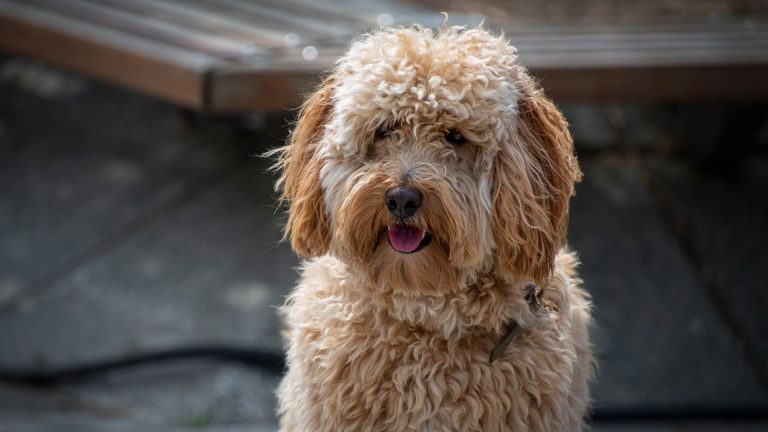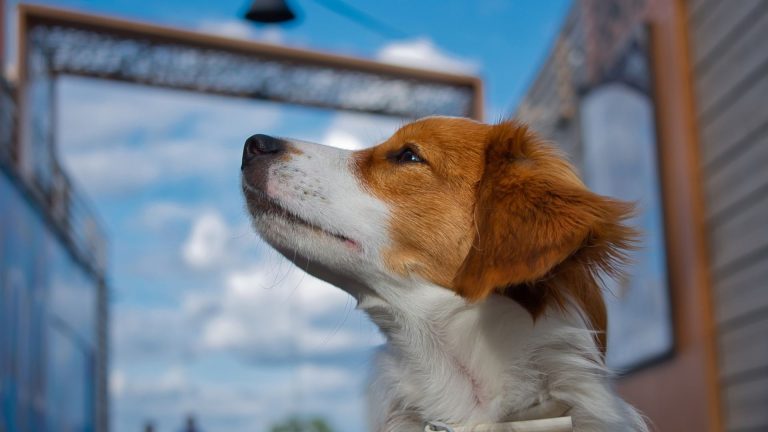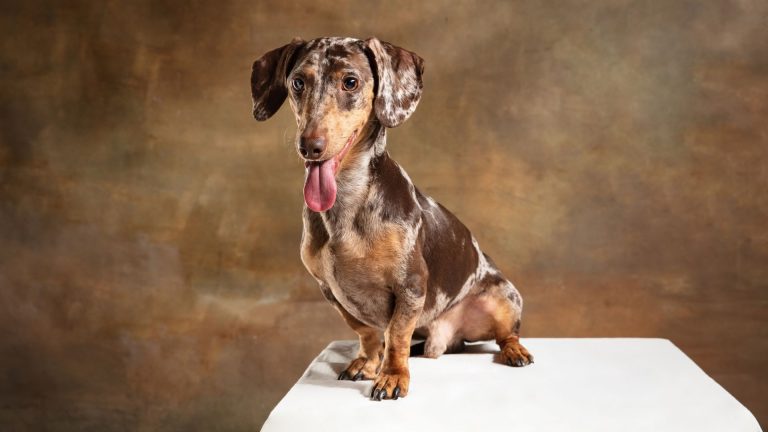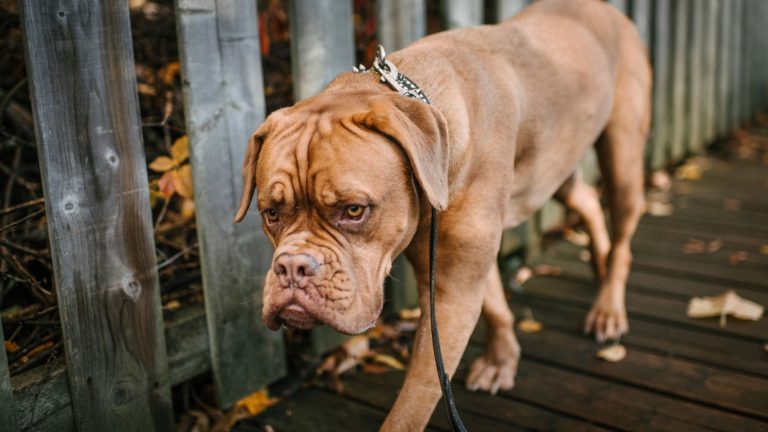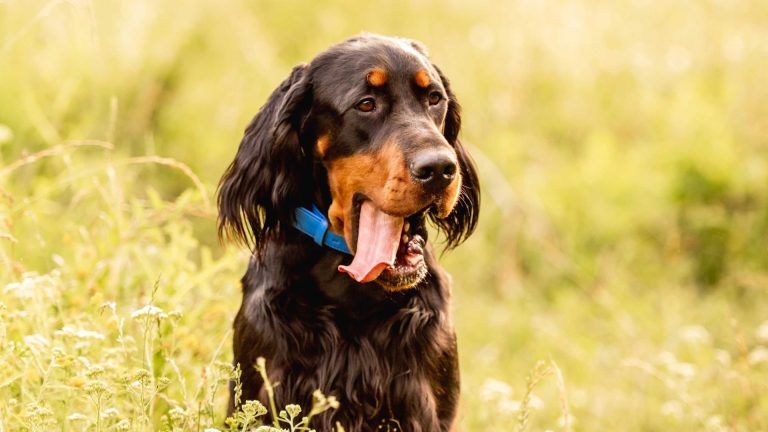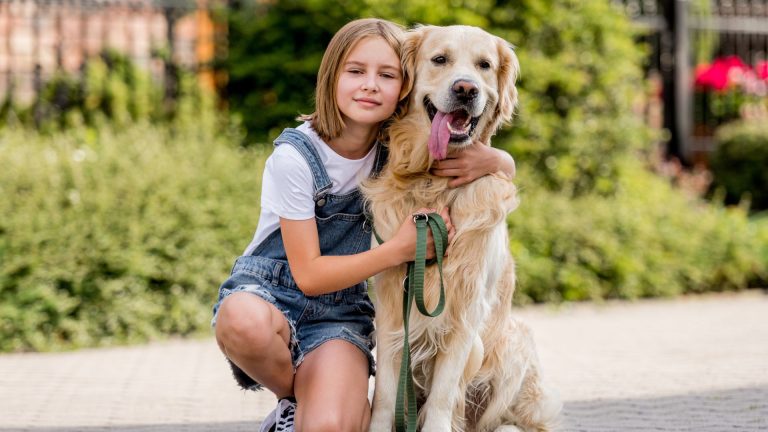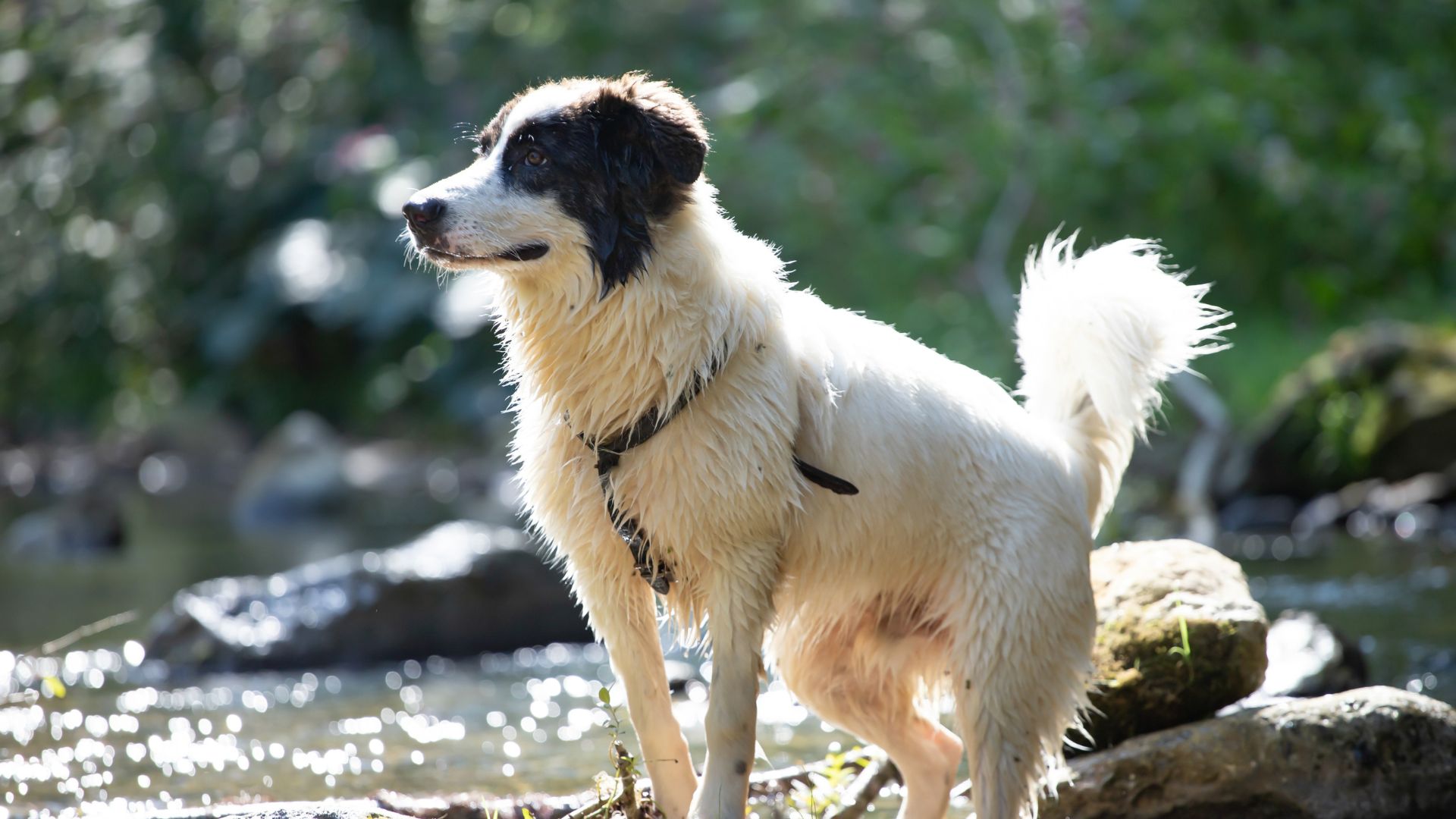
Contents
Turkey has many unique and ancient dog breeds. These dogs have had important roles in Turkish culture and history. These breeds are renowned for their distinct physical characteristics, versatile abilities, and loyal temperaments. Turkish dog breeds have been selectively bred for various purposes, including guarding livestock, hunting, and companionship. Each breed reflects the diverse landscapes and climates of Turkey, from the rugged mountains to the expansive plains.

The importance of Turkish dog breeds extends beyond their functional roles. They hold cultural significance and are cherished as symbols of national heritage. The popularity of these breeds has grown internationally, as more dog enthusiasts and breeders recognize their unique qualities. Turkish dog breeds are valued for their intelligence. They are known for their strength and loyalty. Whether working or as pets, they hold a special place in the canine world.
1. Anatolian Shepherd Dog
The Anatolian Shepherd Dog, or Kangal, has a long history originating from Turkey’s Anatolian Plateau thousands of years ago. Bred to safeguard livestock from predators like wolves, bears, and jackals, they evolved into resilient guardians due to the region’s tough conditions. Influenced by ancient mastiff-type dogs brought to Anatolia by migrating tribes, their lineage is deeply rooted in history.
Physical Characteristics
The Anatolian Shepherd Dog is a large and powerful breed, characterized by its impressive size and sturdy build. Male Anatolian Shepherds generally stand 29 to 32 inches tall at the shoulder. Females are slightly smaller, standing 27 to 31 inches tall. They weigh between 80 to 150 pounds, with males being larger and heavier. Their coat is short to medium in length, dense, and double-layered, providing protection against harsh weather conditions. Coat colors vary and can include fawn, white, brindle, and variations with or without a black mask.

Temperament and Behavior
The Anatolian Shepherd is known for its independent and strong-willed nature, traits that are essential for a livestock guardian. They are highly intelligent, alert, and possess a strong protective instinct. This breed is reserved and aloof with strangers but deeply loyal and affectionate towards its family. Anatolian Shepherds are known for their calm and composed demeanor, making them reliable and steady guardians. However, their independent streak requires consistent and firm training from an early age to ensure they develop into well-behaved companions.
Uses and Roles
The primary role of the Anatolian Shepherd Dog has always been as a livestock guardian. Their presence alone is often enough to deter predators, and they are known to courageously confront threats when necessary. Their keen sense of smell, hearing, and sight make them exceptional at detecting danger. Beyond their traditional role, Anatolian Shepherds have also adapted to modern life as family pets and property guardians. Their protective nature extends to their human families, making them excellent watchdogs. Despite their formidable appearance and guarding instincts, they are gentle and tolerant with children, making them well-rounded and versatile companions.
2. Kangal Shepherd Dog
The Kangal Shepherd Dog, often simply referred to as the Kangal, hails from the Sivas province in central Turkey. This breed is deeply rooted in Turkish history and culture, with its origins dating back several centuries. The Kangal was traditionally bred by Turkish shepherds. Its purpose was to guard sheep and goats from predators like wolves, bears, and jackals. Developed in Anatolia’s rugged regions, it became known for its reliability and fearlessness. Today, the Kangal is a symbol of national pride in Turkey and is considered the national dog.
Unique Traits and Features
The Kangal Shepherd Dog is distinguished by several unique traits and features. It is a large, muscular breed, with males typically standing between 30 to 32 inches at the shoulder and females between 28 to 30 inches. They weigh between 90 to 150 pounds, with males being generally larger and heavier. The Kangal’s coat is short, dense, and double-layered, usually fawn or light tan with a distinct black mask and ears. This breed has a broad head, strong jaws, and a powerful, well-proportioned body, making it both agile and formidable.
One of the most notable features of the Kangal is its incredible bite force, which is among the strongest of any dog breed. This trait, combined with their instinctual guarding behavior, makes them exceptionally effective at deterring and confronting predators.
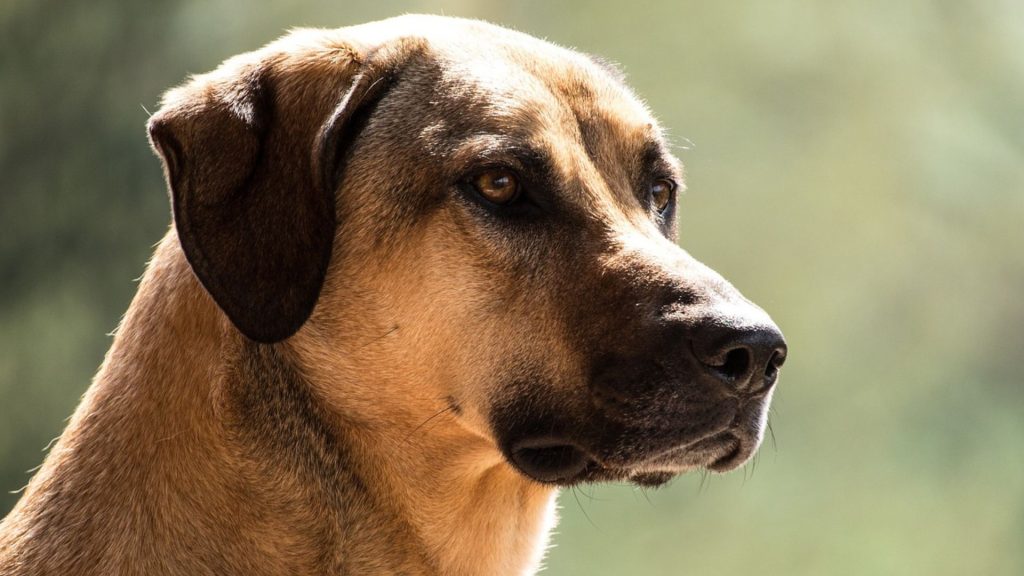
Temperament and Behavior
The Kangal Shepherd Dog is known for its calm, confident, and protective temperament. They are highly intelligent and possess a strong sense of loyalty to their family and flock. While they are reserved and wary of strangers, they are gentle and affectionate with those they know and trust. Kangals are independent thinkers, a trait developed from their historical role of making decisions while guarding livestock without direct human supervision. This independence can sometimes be mistaken for stubbornness, but with proper training and socialization, Kangals can be well-mannered and obedient.
Despite their protective nature, Kangals are not aggressive by default. They tend to assess situations carefully and respond appropriately, using their imposing presence to intimidate rather than resorting to violence immediately.
Role as a Guardian Dog
The primary role of the Kangal Shepherd Dog has always been as a guardian of livestock. Their imposing size, strength, and courage make them exceptionally well-suited for protecting sheep and goats from large predators. Kangals patrol their territory and remain vigilant, often working in pairs or small groups to maximize their effectiveness. Their protective instincts extend to their human family as well, making them excellent guard dogs for homes and properties.
In addition to their traditional role, Kangals have also proven to be adaptable and versatile in modern settings. They are employed in various roles, including search and rescue, therapy, and as family pets. However, due to their size and protective instincts, they require experienced owners who can provide consistent training and socialization.
Overall, the Kangal Shepherd Dog is a remarkable breed, combining strength, intelligence, and loyalty with a natural aptitude for guardianship. Their unique traits and historical significance make them a treasured part of Turkish heritage and a valued companion worldwide.
3. Akbash Dog
The Akbash Dog is an ancient breed that originates from Turkey, specifically from the western regions of the country. The breed’s name, “Akbash,” translates to “white head” in Turkish, reflecting its distinct appearance. The Akbash Dog’s history dates back over 3,000 years, with roots believed to be intertwined with the early civilizations of the Fertile Crescent. Bred by Turkish shepherds, the Akbash was developed as a livestock guardian dog, valued for its protective instincts, agility, and keen senses. The breed has played a crucial role in safeguarding flocks of sheep and goats from predators such as wolves, bears, and jackals in the harsh and varied terrains of Turkey.
Physical Description
The Akbash Dog is a large, muscular breed with a distinctive white coat that provides camouflage while guarding livestock. Males typically stand between 28 to 34 inches at the shoulder and weigh between 90 to 140 pounds, while females are slightly smaller, standing between 27 to 32 inches and weighing between 75 to 120 pounds. The breed’s coat is double-layered, with a dense undercoat and a longer, coarse outer coat that can be either short or medium in length. This coat protects them from the elements, whether they are working in hot summers or cold winters.
The Akbash has a broad, powerful head with a slightly tapered muzzle and strong jaws. Their eyes are almond-shaped and can range in color from gold to dark brown, exuding an alert and intelligent expression. The ears are V-shaped, set high on the head, and typically hang down, adding to their attentive and watchful demeanor.
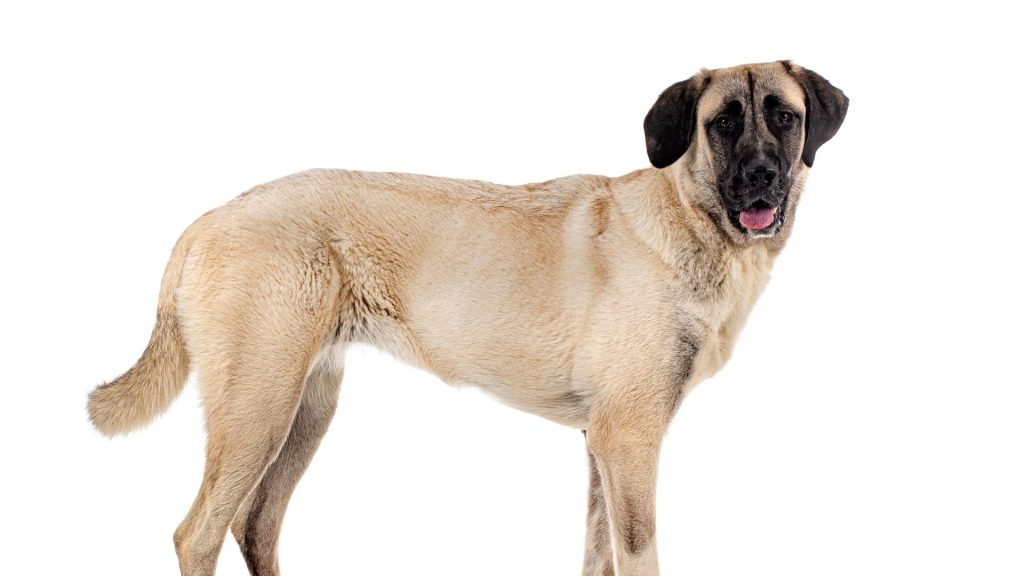
Temperament and Suitability as a Pet
The Akbash Dog is known for its calm, independent, and protective nature. They are highly intelligent and possess a strong instinct to guard and protect their flock, whether that be livestock or their human family. This breed is naturally wary of strangers, which makes them excellent watchdogs. However, with proper socialization from an early age, Akbash Dogs can differentiate between friend and foe, making them well-suited for family life.
As pets, Akbash Dogs are affectionate and loyal to their families. They are gentle and patient with children and other pets, particularly if they have been raised together. However, due to their size and protective instincts, they require an owner who can provide firm, consistent training and establish themselves as the pack leader. The Akbash’s independent streak means they do best with experienced dog owners who understand the breed’s unique needs and characteristics.
Uses in Livestock Protection
The primary role of the Akbash Dog has always been as a livestock guardian. Their imposing size, strength, and keen senses make them formidable protectors against predators. Akbash Dogs work independently or in pairs to patrol and protect their flock, relying on their instincts and training to keep predators at bay. They are known for their ability to make decisions on their own, a trait developed from centuries of working without direct human supervision.
In their role as livestock guardians, Akbash Dogs do not herd the animals but instead watch over them, staying close to the flock and intervening only when a threat is detected. Their white coat allows them to blend in with the sheep, providing an element of surprise against predators. The Akbash’s presence alone is often enough to deter potential threats, but they are also capable of confronting and repelling predators when necessary.
Overall, the Akbash Dog is a remarkable breed, combining physical strength, intelligence, and a strong protective instinct. Their historical role as livestock guardians has shaped them into loyal, dependable, and effective protectors, making them a valuable asset for farmers and a loving companion for families.
4. Turkish Kangal
The Turkish Kangal is often confused with the Kangal Shepherd Dog, but they are essentially the same breed, with the terms sometimes used interchangeably. The distinction arises more from regional naming conventions and slight differences in breeding practices rather than significant differences in the dogs themselves. In some contexts, “Kangal Shepherd Dog” emphasizes their role as livestock guardians, while “Turkish Kangal” highlights their geographic origin. Both terms refer to a breed renowned for its protective instincts, loyalty, and formidable guarding abilities.
Physical and Behavioral Traits
The Turkish Kangal is a large, powerful dog with a robust and muscular build. Males typically stand between 30 to 32 inches at the shoulder, while females range from 28 to 30 inches. Their weight varies from 90 to 150 pounds, with males generally being larger and heavier. They have a distinctive appearance characterized by a short, dense double coat that is usually fawn or light tan, accompanied by a black mask and ears. Their thick coat protects them from harsh weather conditions, allowing them to thrive in various environments.
Behaviorally, the Turkish Kangal is known for its calm, confident, and protective nature. They are highly intelligent and possess a strong instinct to guard their flock or family. Kangals are independent thinkers, capable of making decisions without direct human supervision, which is a trait developed from their traditional role as livestock guardians. Despite their imposing presence, they are gentle and affectionate with their families, especially children, and exhibit a reserved and watchful demeanor around strangers. Proper socialization and training from an early age are essential to ensure they develop into well-mannered and obedient companions.
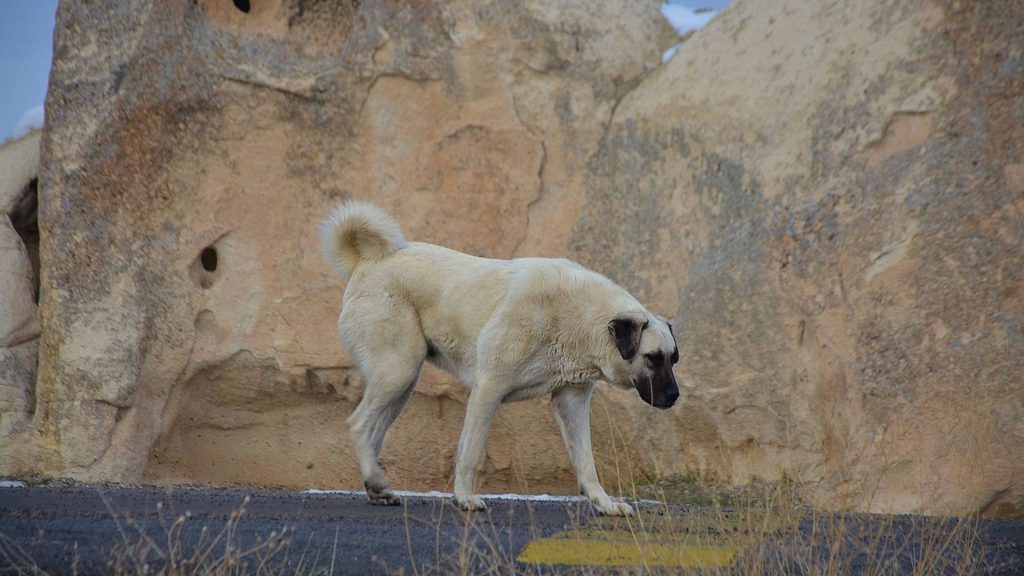
Historical and Cultural Significance
The Turkish Kangal holds significant historical and cultural importance in Turkey. This breed has been an integral part of Turkish rural life for centuries, primarily used to protect livestock from predators in the rugged and remote regions of Anatolia. The Kangal’s lineage can be traced back to ancient times, and their development has been heavily influenced by the need for a reliable and fearless guardian dog.
Culturally, the Kangal is a symbol of national pride in Turkey. They are often celebrated in Turkish folklore, art, and literature, reflecting their esteemed status in society. The breed is also recognized as a national treasure, with efforts made to preserve and promote the purebred Kangal both within Turkey and internationally. Their reputation as one of the world’s best livestock guardian breeds has contributed to their cultural significance and widespread admiration.
Modern Roles and Uses
In modern times, the Turkish Kangal continues to serve as an exceptional livestock guardian, protecting flocks from predators in rural and agricultural settings. Their natural guarding instincts, combined with their physical strength and intelligence, make them highly effective at this role. Beyond their traditional use, Kangals have adapted to various contemporary roles, including:
- Family Guardians: Their protective nature extends to their human families, making them excellent guard dogs for homes and properties. They are loyal and affectionate with their families, providing both security and companionship.
- Search and Rescue: The Kangal’s keen senses and strong work ethic have made them suitable for search and rescue operations, where their ability to navigate challenging terrains and make independent decisions is valuable.
- Therapy Dogs: Some Kangals are used as therapy dogs due to their calm and gentle disposition, providing comfort and support to individuals in need.
- Breeding Programs: Efforts to preserve the breed have led to organized breeding programs, both in Turkey and abroad, ensuring the continuation of the purebred Kangal lineage.
Overall, the Turkish Kangal remains a versatile and valued breed, revered for its historical significance, cultural importance, and modern-day applications. Their unique combination of strength, intelligence, and loyalty makes them a treasured part of Turkey’s heritage and a respected breed worldwide.
5. Catalburun (Turkish Pointer)
The Catalburun, also known as the Turkish Pointer, is a rare and unique breed that hails from the Tarsus region of Turkey. This breed has a long history that is closely tied to the traditional hunting practices of the region. The Catalburun was developed by local hunters who sought a versatile and effective hunting dog. Over generations, selective breeding practices focused on enhancing the breed’s hunting abilities and unique physical characteristics. Despite its longstanding presence in Turkey, the Catalburun remains relatively unknown outside its homeland, making it a treasured and somewhat mysterious breed.
Unique Physical Features (Split Nose)
One of the most striking and distinguishing features of the Catalburun is its split nose, a trait that is rarely seen in other dog breeds. The split nose, or “double nose,” gives the appearance of the nose being divided into two separate sections, which some believe enhances the dog’s sense of smell. This unique nasal structure is thought to provide the Catalburun with superior scent-tracking abilities, making it highly effective in hunting and tracking game. The breed also has a muscular and athletic build, with a medium-sized frame, typically standing between 18 to 24 inches at the shoulder and weighing between 35 to 55 pounds. Their coat is short, dense, and comes in various colors, including white, liver, and combinations thereof.
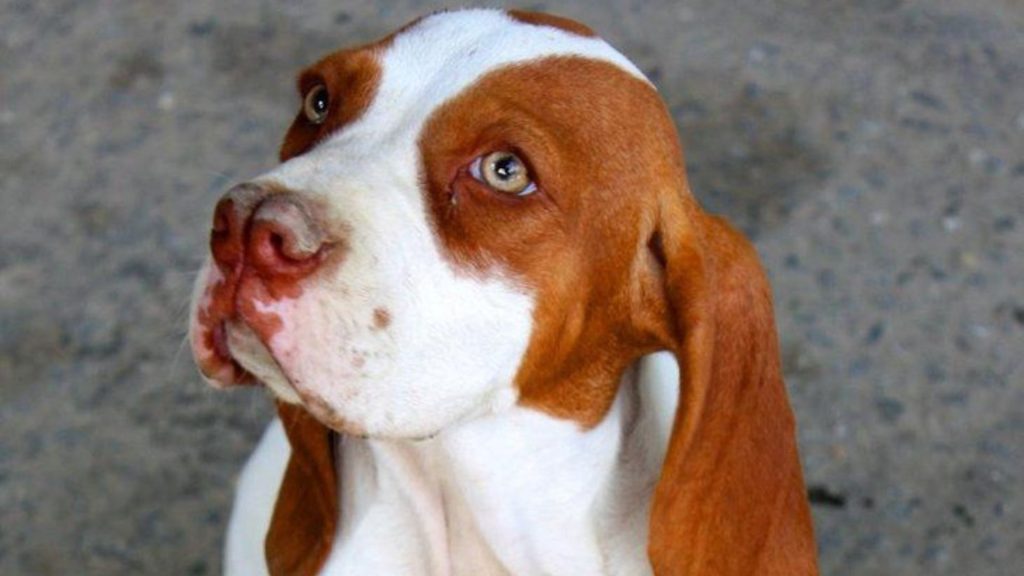
Temperament and Behavior
The Catalburun is known for its intelligent, energetic, and loyal temperament. These dogs are highly alert and possess a strong work ethic, traits that are essential for their role as hunting companions. They are quick learners and respond well to training, making them suitable for various tasks beyond hunting. Despite their high energy levels and strong prey drive, Catalburuns are also known for their gentle and affectionate nature, particularly with their families. They form strong bonds with their owners and are known to be protective and attentive.
As pets, Catalburuns are generally good-natured and sociable. They get along well with children and other pets, especially if they are properly socialized from a young age. Their high energy levels mean they require regular exercise and mental stimulation to prevent boredom and destructive behavior. Activities like agility training, obedience exercises, and interactive play are beneficial for keeping them engaged and happy.
Uses in Hunting and as Pets
The Catalburun has traditionally been used as a hunting dog, prized for its exceptional scent-tracking abilities and agility. Hunters in Turkey have relied on this breed for hunting various types of game, including birds and small mammals. The Catalburun’s split nose, combined with its keen senses and endurance, makes it particularly effective in locating and retrieving game over challenging terrain. Their ability to work tirelessly and independently in the field has cemented their reputation as skilled and reliable hunting companions.
In addition to their hunting prowess, Catalburuns also make excellent pets for active families. Their loyal and affectionate nature, combined with their intelligence and trainability, makes them well-suited for domestic life. However, potential owners should be prepared to meet their exercise needs and provide consistent training and socialization. With the right care and environment, Catalburuns can thrive as loving and devoted family members.
Overall, the Catalburun is a fascinating and unique breed, combining exceptional hunting skills with a loyal and affectionate temperament. Their distinctive split nose and rich history make them a standout among dog breeds, cherished both as hunting partners and family pets.
6. Turkish Greyhound (Tazi)
The Turkish Greyhound, also known as the Tazi, is an ancient breed with a history that stretches back thousands of years. This breed has its origins in the Middle East and Central Asia, where it was prized by nomadic tribes for its speed, agility, and hunting prowess. The Tazi has a deep connection with the Turkish and surrounding cultures, where it was primarily used for hunting game across the vast and varied landscapes. Historical records and artifacts depict similar dogs accompanying hunters, highlighting the breed’s long-standing role in human society. The Tazi’s heritage reflects its adaptation to the rugged terrains and harsh climates of the region, making it a resilient and highly valued companion.
Physical Characteristics and Speed
The Turkish Greyhound is a medium to large-sized breed, known for its lean and athletic build, which is perfectly suited for high-speed pursuits. Males typically stand between 26 to 30 inches at the shoulder, while females range from 24 to 28 inches. They weigh between 45 to 70 pounds, with males generally being larger and heavier. The Tazi’s coat is short and smooth, coming in various colors, including fawn, black, white, and brindle.
One of the most notable features of the Tazi is its speed and agility. The breed is built for running, with long, powerful legs, a deep chest for lung capacity, and a narrow, aerodynamic body. These physical traits allow the Tazi to reach impressive speeds, making it an exceptional sighthound for hunting fast-moving prey. Their keen eyesight and acute sense of smell further enhance their hunting capabilities, allowing them to detect and chase down game over great distances.
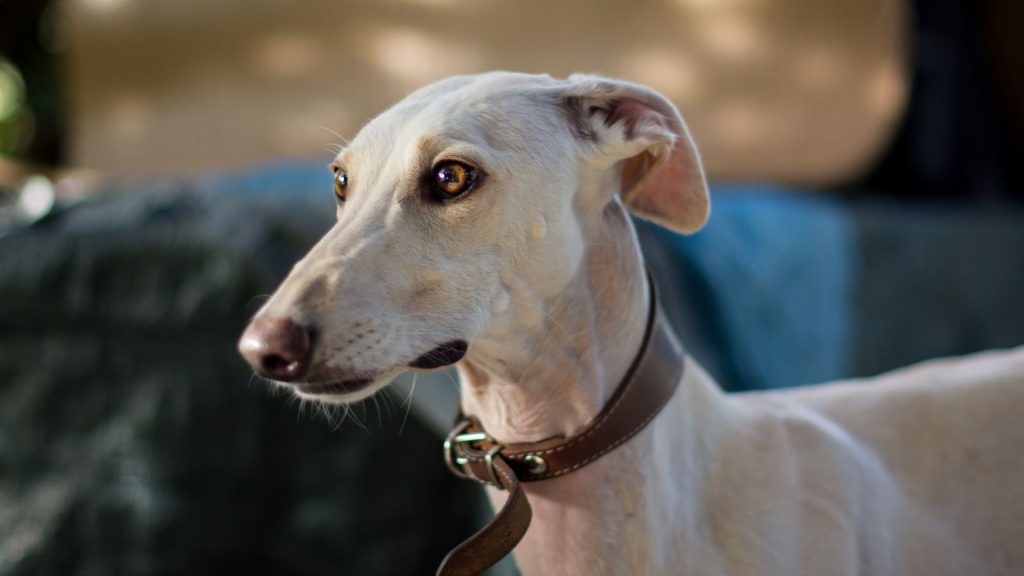
Temperament and Suitability as a Pet
The Turkish Greyhound is known for its gentle, affectionate, and loyal temperament. Despite their strong hunting instincts, Tazis are typically calm and well-mannered when not in pursuit. They form strong bonds with their families and are known to be affectionate and protective of their loved ones. The Tazi’s intelligence and eagerness to please make them responsive to training, although their independent nature can sometimes present a challenge. Consistent, positive reinforcement training methods work best with this breed.
As pets, Tazis are generally well-suited to active families who can provide ample exercise and mental stimulation. They enjoy spending time with their families and are good with children and other pets, particularly if they are socialized from an early age. However, potential owners should be aware of the breed’s high energy levels and need for regular physical activity. Long walks, runs, and playtime are essential to keep them happy and healthy. Their natural hunting instincts mean they may have a strong prey drive, so care should be taken when introducing them to smaller animals.
Traditional Uses and Roles
Traditionally, the Turkish Greyhound has been used as a hunting dog, particularly for hunting hares, gazelles, and other small to medium-sized game. Their speed and endurance made them invaluable to hunters who relied on them to chase down and capture prey. The Tazi’s ability to cover large distances quickly and navigate difficult terrain made them well-suited for the hunting practices of nomadic and rural communities.
In addition to hunting, the Tazi has also been used for guarding and companionship. Their alert and protective nature makes them effective watchdogs, while their loyalty and affectionate disposition make them cherished family members. In modern times, the Tazi continues to be valued for its versatility, participating in various dog sports, including lure coursing and agility, which take advantage of their speed and agility.
Overall, the Turkish Greyhound, or Tazi, is a remarkable breed that combines historical significance, physical prowess, and a gentle temperament. Their unique characteristics make them exceptional hunting dogs and loving pets, treasured by those who appreciate their heritage and abilities.
7. Aksaray Malaklisi
The Aksaray Malaklisi, also known as the Turkish Mastiff, originates from the Aksaray province in central Turkey. This breed has a deep-rooted history that dates back several centuries, evolving primarily as a livestock guardian dog. The harsh and varied terrains of the region, coupled with the need to protect livestock from predators such as wolves and bears, significantly influenced the development of the Aksaray Malaklisi. Historically, these dogs were selectively bred by local shepherds and farmers for their size, strength, and protective instincts, ensuring the survival and safety of their flocks and herds. Over time, the Aksaray Malaklisi has become an emblematic breed in Turkey, valued for its guardian capabilities and loyal temperament.
Physical and Temperamental Traits
The Aksaray Malaklisi is a large and imposing breed, characterized by its massive size and robust build. Males typically stand between 29 to 32 inches at the shoulder, while females range from 27 to 30 inches. Their weight can vary significantly, with males often weighing between 130 to 200 pounds and females slightly lighter. The breed has a thick, dense coat that provides protection against harsh weather conditions. The coat color varies and can include shades of fawn, brindle, white, and gray. The Aksaray Malaklisi has a broad head, powerful jaws, and a muscular neck, contributing to its formidable appearance.
Temperamentally, the Aksaray Malaklisi is known for its calm, confident, and protective nature. They are highly intelligent and possess strong guardian instincts, making them excellent watchdogs and protectors. Despite their intimidating presence, these dogs are gentle and affectionate with their families, displaying loyalty and devotion. They are typically reserved and wary of strangers, which enhances their effectiveness as guardians. The breed is known for its independent thinking and ability to make decisions without direct human supervision, a trait developed from their traditional role in protecting livestock.
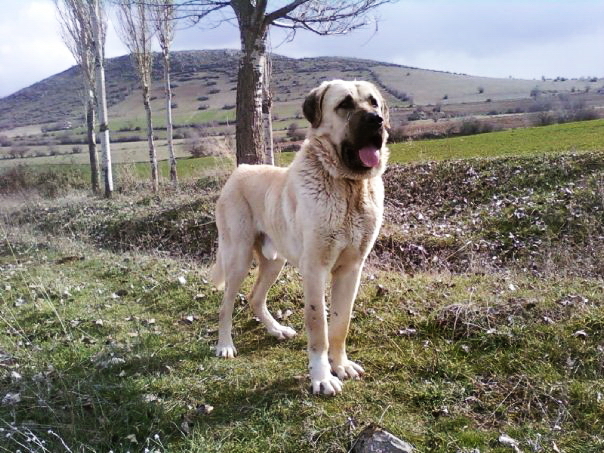
Role as a Guardian Dog
The primary role of the Aksaray Malaklisi has always been as a livestock guardian dog. Their imposing size, strength, and innate protective instincts make them highly effective at deterring and confronting predators. These dogs patrol their territory and remain vigilant, often working independently or in pairs to maximize their protective coverage. Their deep, resonant bark serves as a warning to potential intruders, and their physical presence alone is often enough to deter threats.
In addition to their traditional role in guarding livestock, the Aksaray Malaklisi is also used as a property and personal guardian. Their loyalty and protective nature extend to their human families, making them excellent watchdogs for homes and properties. They are particularly effective in rural and agricultural settings where their guardian skills can be fully utilized.
The Aksaray Malaklisi’s ability to assess and respond to potential threats, combined with their gentle disposition towards their families, makes them a versatile and reliable breed. They require consistent training and socialization from an early age to ensure they develop into well-mannered and obedient companions. With the right care and environment, the Aksaray Malaklisi can thrive as both a working guardian and a loving family member.
Overall, the Aksaray Malaklisi is a remarkable breed that combines physical strength, intelligence, and a strong protective instinct. Their historical role as livestock guardians has shaped them into dependable and loyal dogs, making them a treasured part of Turkey’s canine heritage and a valued companion in modern times.
Care and Training of Turkish Dog Breeds
Turkish dog breeds, such as the Anatolian Shepherd Dog, Kangal Shepherd Dog, Akbash Dog, Catalburun, Turkish Greyhound (Tazi), and Aksaray Malaklisi, have specific care needs that ensure they remain healthy, happy, and well-adjusted. Here are some general care guidelines:
- Diet and Nutrition: Provide a balanced diet tailored to the breed’s size, age, and activity level. High-quality commercial dog food or a veterinarian-approved homemade diet can meet their nutritional needs. Ensure they have access to fresh water at all times.
- Exercise and Activity: Turkish dog breeds are typically active and require regular exercise to maintain their physical and mental health. Daily walks, playtime, and activities such as running, hiking, or agility training are essential. For working breeds like the Anatolian Shepherd and Kangal, opportunities to engage in tasks that mimic their traditional roles can be beneficial.
- Grooming: Regular grooming is important to keep their coats healthy and free of tangles. Breeds with short coats, like the Kangal and Akbash, need less frequent grooming, while those with longer or denser coats may require more attention. Regular brushing, bathing as needed, and routine checks for parasites like ticks and fleas are essential.
- Socialization: Early and consistent socialization helps Turkish dog breeds develop into well-rounded and confident dogs. Expose them to various people, environments, and situations from a young age to prevent fearfulness or aggression.
Training Tips and Techniques
- Positive Reinforcement: Use positive reinforcement techniques, such as treats, praise, and play, to encourage desired behaviors. Turkish dog breeds respond well to rewards and positive interactions.
- Consistency: Be consistent with commands and rules to avoid confusing your dog. Consistent training helps them understand expectations and learn more effectively.
- Early Training: Start training at a young age to establish good behavior patterns early on. Basic obedience training, including commands like sit, stay, come, and heel, is essential.
- Patience and Persistence: Turkish dog breeds can be independent and strong-willed. Patience and persistence are key to successful training. Short, frequent training sessions can be more effective than long, infrequent ones.
- Socialization Training: Incorporate socialization into training by introducing your dog to different people, animals, and environments. This helps prevent behavioral issues related to fear or aggression.
Health Considerations and Common Issues
- Hip Dysplasia: Many large Turkish dog breeds are prone to hip dysplasia, a genetic condition affecting the hip joints. Regular veterinary check-ups, maintaining a healthy weight, and providing appropriate exercise can help manage and prevent symptoms.
- Bloat (Gastric Dilatation-Volvulus): Large, deep-chested breeds like the Anatolian Shepherd and Kangal are at risk of bloat, a potentially life-threatening condition. Feeding smaller, frequent meals and avoiding vigorous exercise after eating can reduce the risk.
- Eye Problems: Some Turkish dog breeds may be prone to eye conditions such as entropion or cataracts. Regular eye examinations by a veterinarian can help detect and address issues early.
- Ear Infections: Breeds with floppy ears, like the Catalburun, can be prone to ear infections. Regular ear cleaning and monitoring for signs of infection, such as redness or discharge, are important.
- Skin Conditions: Regular grooming and skin checks can help identify and manage skin conditions, including allergies and parasites.
- Vaccinations and Preventive Care: Keep up with regular vaccinations, flea and tick prevention, and deworming. Regular veterinary visits are essential for monitoring overall health and addressing any concerns promptly.
By following these care and training guidelines, owners can ensure that their Turkish dog breeds lead healthy, fulfilling lives, whether as working dogs, guardians, or beloved family pets.
Summary
Turkish dog breeds, such as the Anatolian Shepherd Dog, Kangal Shepherd Dog, Akbash Dog, Catalburun, Turkish Greyhound (Tazi), and Aksaray Malaklisi, are celebrated for their unique combination of strength, intelligence, loyalty, and historical significance. Developed over centuries for roles in livestock guardianship, hunting, and companionship, these breeds possess distinctive traits like the Catalburun’s split nose and the Tazi’s exceptional speed.
In modern society, they continue to excel as livestock guardians, family protectors, hunting companions, search and rescue dogs, and therapy animals. Choosing a Turkish dog breed requires understanding their need for ample exercise, consistent training, and socialization. These breeds thrive with experienced owners who can meet their specific needs, providing a loyal and protective presence in return. Proper care and attention ensure these remarkable dogs become cherished family members, enriching the lives of those who appreciate their unique qualities.

Hello, I’m Donna Carter, the founder and writer behind PetFleck.com. My journey with dogs started years ago, and it’s been a passion that has only grown stronger over time. I’ve always been fascinated by the unique behaviors and characteristics of different dog breeds, and this curiosity has led me to dive deep into the world of canine studies.
My love for dogs is the driving force behind everything I do. I’ve dedicated countless hours to researching and understanding the nuances of dog care, training, and breed-specific traits. This dedication helps me create content that is not only informative but also genuinely helpful for fellow dog lovers and owners.
At PetFleck, I combine my extensive knowledge and hands-on experience with my passion for dogs to provide valuable insights and tips. Whether it’s exploring different breeds or offering practical advice on dog care, I aim to share knowledge that makes a real difference in the lives of dogs and their families.
I’m thrilled to share my love for dogs with you through my writing. I hope my articles inspire and inform, helping you to better understand and appreciate the incredible bond we share with our furry friends.
Thank you for visiting PetFleck.com, and I look forward to connecting with you through our shared love of dogs!

